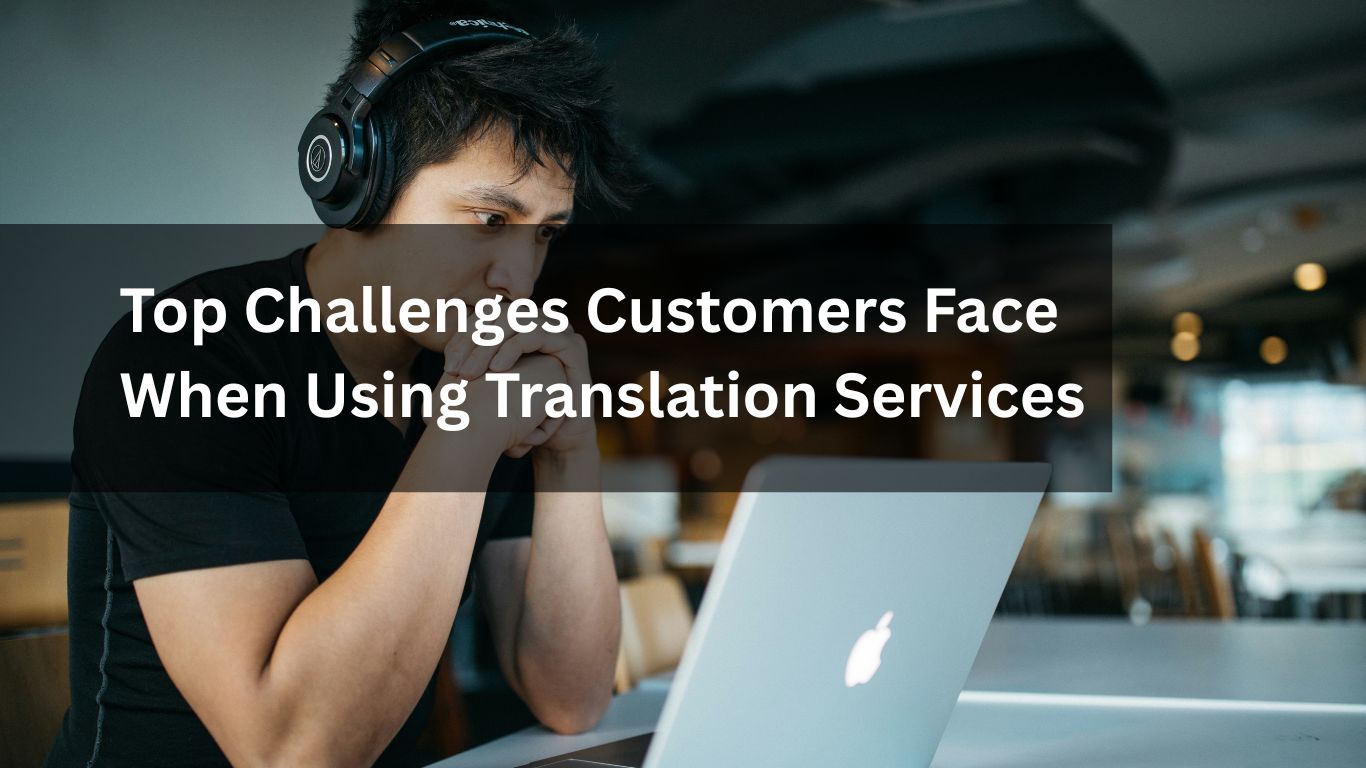Top Challenges Customers Face When Using Translation Services
In an increasingly global world, translation services are essential for businesses, professionals, and individuals alike. Whether it’s translating legal contracts, marketing materials, websites, or medical documents, customers expect accurate and culturally relevant results. But despite the growing availability of translation solutions, many customers still face significant challenges that impact their experience.
In this blog, we explore the most common problems customers encounter when using translation services—and why it’s important to address them.


1.Quality and Accuracy Concerns
One of the biggest worries customers have is whether the translation truly reflects the meaning of the original text. Even a grammatically correct translation can misrepresent the intended message, especially in technical fields like law, medicine, or engineering. A minor error in translation can lead to legal disputes, compliance issues, or safety risks. For many customers, ensuring accuracy is non-negotiable—but not always guaranteed.
2.Lack of Cultural Adaptation
A word-for-word translation often misses the mark when it comes to cultural nuances. Idioms, humor, slang, or cultural references can easily be lost—or worse, misunderstood—when translated literally. This is particularly problematic in marketing or branding, where the emotional or persuasive impact of language matters. Without proper localization, a message can fall flat or even offend the target audience.


3. Inconsistent Terminology
For large or ongoing projects, maintaining consistency in terminology across documents is critical. But when multiple translators are involved or when no centralized glossary is used, inconsistencies can creep in. Customers may find different translations for the same term in various parts of their content, leading to confusion and a lack of professionalism.
4. Slow Turnaround Times
Time is money, and customers often need translations under tight deadlines. Unfortunately, translation services may experience delays in delivery, especially for complex projects or rare language pairs. Customers can feel frustrated when timelines aren’t clearly communicated or deadlines are missed.


5.High Costs
Professional translation services—especially in specialized fields or less common languages—can be expensive. Many customers are surprised by the price, especially if they need certified translations, technical expertise, or additional services like proofreading or desktop publishing. Budget constraints can make it difficult to access high-quality translation.
6. Confidentiality Risks
When dealing with sensitive documents such as legal contracts, business strategies, or medical records, customers rightly worry about data security and confidentiality. Not all translation providers have clear policies or secure systems in place, leaving customers unsure if their information is adequately protected.


7. Difficulty Assessing Quality Before Purchase
For customers who don’t speak the target language, it’s hard to know whether a translation is high-quality or not. Without a trusted review process or transparent guarantees, many customers feel they’re taking a leap of faith when hiring a translation service.
8. Machine vs Human Translation Confusion
With the rise of machine translation tools like Google Translate, customers are sometimes unclear about the difference between automated translation and professional human translation. This confusion can lead to unrealistic expectations, or disappointment if they pay for what they think is a human service but receive a machine-generated product.


9. Formatting and Technical Issues
A translated text isn’t always a simple copy-paste job. Translations often need to fit within specific designs, software, or layouts. Customers may find that translated content doesn’t match the original formatting, requires resizing, or causes technical glitches—especially with websites, PDFs, or user interfaces.
10. Poor Customer Support
Finally, translation projects require clear communication, project management, and responsive support. Unfortunately, some customers experience poor customer service, including unanswered questions, unclear timelines, or a lack of collaboration. This can lead to frustration, delays, and unmet expectations.

Final Thoughts
Translation is more than swapping words between languages—it’s about conveying meaning, tone, and context accurately and effectively. For customers, choosing the right translation service means navigating these challenges carefully. Follow us on LinkedIn for more insights
Whether you’re an individual needing a single document or a company managing multilingual content at scale, understanding these common problems can help you make more informed decisions—and ensure your message is heard loud and clear in every language.
Are you struggling with any of these translation challenges? Get in touch with our language expert.


